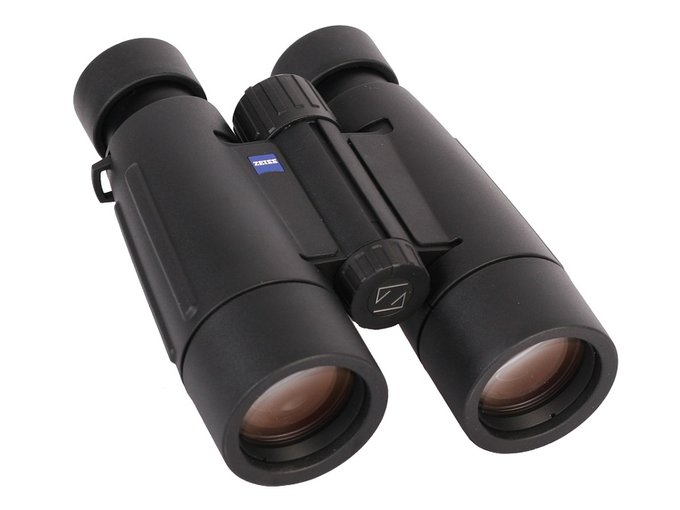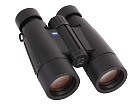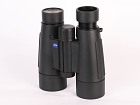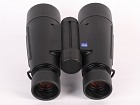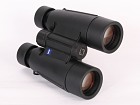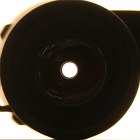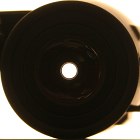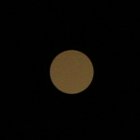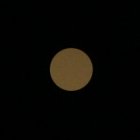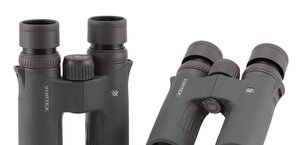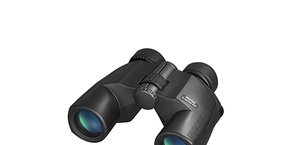Carl Zeiss Conquest 10x40 T*
| Magnification | Lens diameter | Angular field of view | Prisms | Eye relief | Weight | Price |
|---|---|---|---|---|---|---|
| 10 | 40 | 105/1000(6o) | BaK-4/roof | 16 mm | 810 g | 3475 PLN |
Summary
Pros:
- solid and handy housing, comfortable to hold
- exemplary corrected coma,
- low astigmatism,
- low brightness loss at the edge,
- very good transmission,
- high quality Abbe-Koenig prisms made of BaK-4 glass,
- excellent antireflection coatings,
- very good blackening inside the inner tubes,
- circular and untruncated exit pupils,
- low flares.
Wady:
- high distortion.
From among three the most reputable companies currently present on the binoculars market, namely Leica, Swarovski and Zeiss, the tactics of the latter took out fancy the most. If you want to buy a Leica roof prism 42 mm instrument you can choose between a Trinovid and an Ultravid. Both of them cost over 1500 USD and the price difference is slight. If you can afford the one, you can also afford the other – there’s practically no choice then. In the case of Swarovski the situation is similar, only the prices are higher – when it comes to SLC and EL models we speak about the price class of about 2000 USD.
The Zeiss used another tactics. The best and the most expensive Victory series costs abou 2000 USD. The company took into account the fact that not everybody can foot such a bill and, by and large, everyone would like to own a set of binoculars with the Zeiss logo on the casing. The company launched the Conquest series, with a bit worse parameters than the Victory but twice cheaper. If you can’t afford a 2000 USD equipment, you don’t have to give up your dream about a Zeiss and you can start saving up for a Conquest. A very sensible approach, especially that our test proved the 10x40 Conquest to be a very well-made instrument with just one flaw – the high distortion level – and plenty of other advantages plus several categories with near average results. It is indeed a set of binoculars worth your interest. High quality product with excellent optics made by a reputable company and the price is twice lower than that of the most expensive devices in this class. Undoubtedly it is one of the more interesting options on the market.
It is worth drawing one more comparison at the end. There’s a pair of binoculars on the market with the same parameters, made by an equally reputable manufacturer and even a tad cheaper than the Zeiss. We speak of course about a Swarovski Habicht 10x40 which test score is a bit worse than the Conquest’s. Although the score and the price are very much alike, the instruments couldn’t have been more different. The Swarovski is a Porro construction, physically light and classic to the extreme - it was designed in 1949. The Conquest is a heavier roof prism instrument and one of the Zeiss stable’s newest designs. Those differences are also a reason why both devices will find their fans. Perhaps equally good results of significantly cheaper binoculars like an Olympus EXWP I, a Vortex Viper or a Kowa will be also food for thought for everyone.




